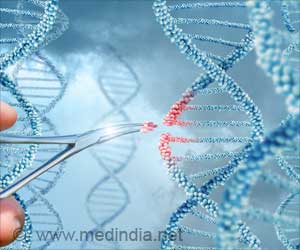Researchers have developed a powerful method for charting the positions of key gene-regulating molecules called nucleosomes.
Dana-Farber Cancer Institute researchers have developed a powerful method for charting the positions of key gene-regulating molecules called nucleosomes throughout the human genome . The mapping tool could help uncover important clues for understanding and diagnosing cancer and other diseases, the scientists say. Moreover, it may shed light on the role of nucleosomes in the process of "reprogramming" an adult cell to its original embryonic state, which is a critical operation in cloning.
"This study presents the first global view of human nucleosome positioning," said Fisher. Although analyses of this type had been pioneered in simpler organisms such as yeast, those approaches were not feasible when applied to the massively larger and more complex human genome.The new technique "provides major new clues to the locations of many hallmark features of the human genome, such as where transcription factors bind, where transcription begins and possibly ends, and where there are other biologically important structural features," said Fisher. Transcription factors are proteins that bind to particular DNA sites in "promoter" regions of genes and turn the genes on or off.
The novel method employed gene microarray studies followed by sophisticated computational data analysis to pin down the nucleosome locations. The paper describes how the scientists used the technique to locate nucleosomes in 3,692 promoters (regions of DNA that interact with regulatory factors to control gene activity) within seven human cell lines, including malignant melanoma.
Nucleosomes are spherical packing units for DNA. They consist of a length of DNA wrapped around a core, like ribbon around a spool that is made up of proteins called histones, and the nucleosomes are located along the chromosomes like beads on a string.
Nucleosomes have multiple functions, including allowing several feet of DNA to be packed tightly into a cell's nucleus. They also regulate gene expression, or activity, by determining whether DNA sequences can be accessed by transcription factors, allowing the factors to regulate expression of a nearby gene.
It has long been assumed that these factors can't bind to a stretch of DNA that is bound by a nucleosome; they can, however, attach to DNA "linkers" between two nucleosomes. With their new method, Fisher's group found that transcription factor binding indeed typically occurs in the "linker" regions in between nucleosomes, rather than in the DNA regions that are tied up by the nucleosome complexes. These results suggest that nucleosome positioning controls the turning on or off of genes, and the nucleosomes can be relocated if cellular needs change.
"We wanted to understand how MITF regulates target genes, and specifically where in promoter regions of those genes does MITF bind," Fisher said. "In the process of this work, we asked whether MITF is binding between nucleosomes or on top of nucleosomes, and that led us to devise a method to ask where the nucleosomes are located."
On a graph, the data displayed as a series of peaks and troughs corresponding to positioned nucleosomes and nucleosome-free regions, respectively. Analysis revealed that promoters of genes that had similar expression status (they were all "off" or "on") had related nucleosome locations. The technique successfully pinpointed the location of some nucleosomes previously found through other means, but the new method can be applied to the entire genomes of human and other cells, said the scientists.
In the future, the techniques might be useful as a diagnostic tool, Fisher said.
"Gene expression is important in all diseases," he explained. "And this method offers a new perspective for looking at how gene expression has been altered in human diseases."
Source-Eurekalert
SRM





